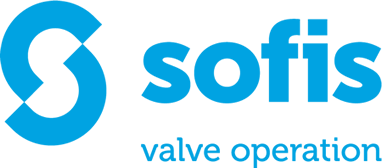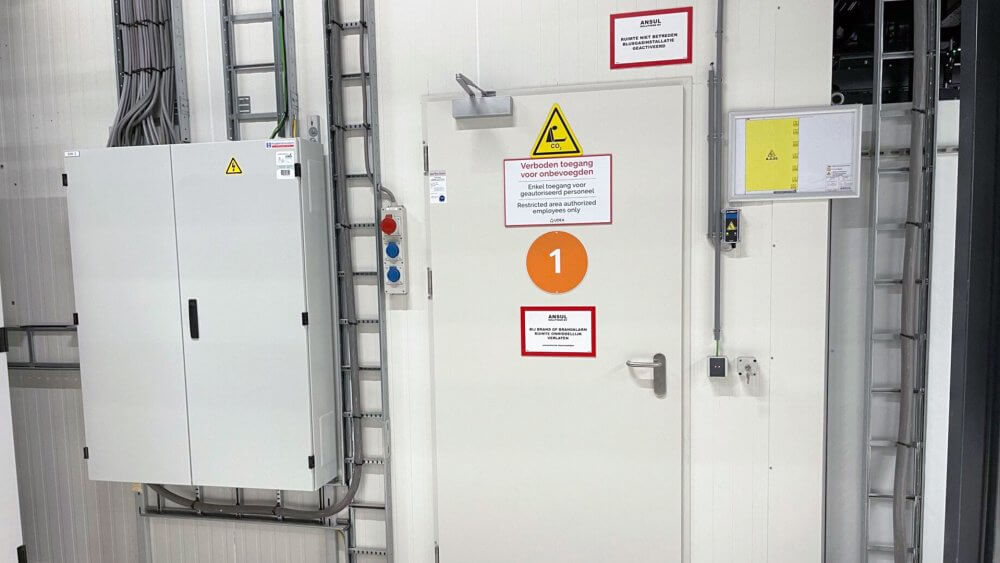A leading wholesaler of organic foods, natural personal care products, and sustainable non-food items, took significant steps to enhance the safety of their employees working in their automated sorting center. Faced with safety challenges with their CO2 fire extinction system, the company implemented an innovative Sofis solution to prevent personnel from asphyxiation.
The facility and the challenge
The automated sorting center of the whole company, integral to its operations, utilizes robots for order picking. The facility is equipped with a CO2 fire extinction system to ensure fire safety. While effective in suppressing fires, this system posed a severe risk to maintenance personnel. Upon activation, the system releases CO2, replacing the oxygen in the area and creating a life-threatening situation for anyone present. In the event of a fire, the safety alarm triggers a full tank of CO2 to be released after a two-minute delay. For maintenance employees working in this four-story facility, this time frame would be insufficient to evacuate, particularly during complex maintenance tasks. The risk of asphyxiation was a grave concern, leading to a need for a robust backup safety system.
Multi-faceted approach
The main risk was that the CO2 system could be activated while personnel were still inside the sorting facility. The rapid release of CO2 would eliminate the oxygen, creating a dangerous environment. The company needed to ensure that the system could not be inadvertently triggered while maintenance work was underway. This required a multi-faceted approach involving both electronic and mechanical safeguards.
Add-on safety system
After consulting with their safety provider, and exploring various options, the wholesaler collaborated with Sofis to implement a comprehensive safety system. This system ensures that the CO2 fire suppression system will be safely deactivated during maintenance, thus protecting employees from asphyxiation. The new add-on safety system uses valve interlocks and two valve interlock key exchange units. The fire extinguishing system cannot be activated when holding one of the personal valve interlock keys while in the facility. The system is based on lockout and a T-card system, which are well-known safety precautions. Combined with valve interlocks, this solution prevents the release of CO2 while personnel are inside the facility.
CO2 system cannot be inadvertently activated
The implementation of the new safety process involved several crucial steps to ensure the CO2 system was deactivated safely. For routine maintenance activities, personnel now first activate a switch to de-activate the fire extinction system, turn the key, insert it into the key exchange unit, and then take a personal valve interlock key to enter the sorting area. As long as a personal valve interlock key is in use, the key to activate the fire extinction system cannot be taken from the key exchange unit. This ensures that the CO2 system cannot be inadvertently activated while maintenance is underway. For major maintenance activities, the procedure is more extensive. First, the system must be deactivated both electronically and mechanically. Personnel then operate the supply valves of the fire extinguisher storage tank to the closed position and register this action in the key exchange unit. This thorough process, although adding extra time to maintenance activities, was accepted by employees as it significantly enhanced safety and reduced anxiety. The new measures provided a secure environment, ensuring that maintenance could be performed without the risk of CO2 exposure, thereby fostering a more confident and focused workforce.
Creating a safe working environment
The previous method of shutting off the fire suppression system was quick but unsafe, leading to employee reluctance and potentially life-threatening situations. The new system, while adding operational time, created a safe working environment. It ensured that the CO2 system could not be activated while personnel were inside, thereby preventing accidental asphyxiation.
Insurance and safety compliance
The insurance company of the wholesale company pushed for a reliable solution due to the high risks involved. The new safety measures not only complied with insurance requirements but also ensured that the fire suppression system remained operational without compromising employee safety.
Integrating electronic and mechanical safeguards
The wholesale company’s commitment to employee safety led to the implementation of a sophisticated safety system in their automated sorting center. By integrating electronic and mechanical safeguards, as well as personnel management protocols, it successfully mitigated the risks associated with its CO2 fire extinction system. The new safety system that was created exemplifies how innovative safety solutions can create a secure and efficient working environment, aligning with Udea’s sustainability and ethical commitments. Through proactive measures and collaboration with Sofis specialists, this company has set a benchmark in ensuring workplace safety in high-risk environments.



